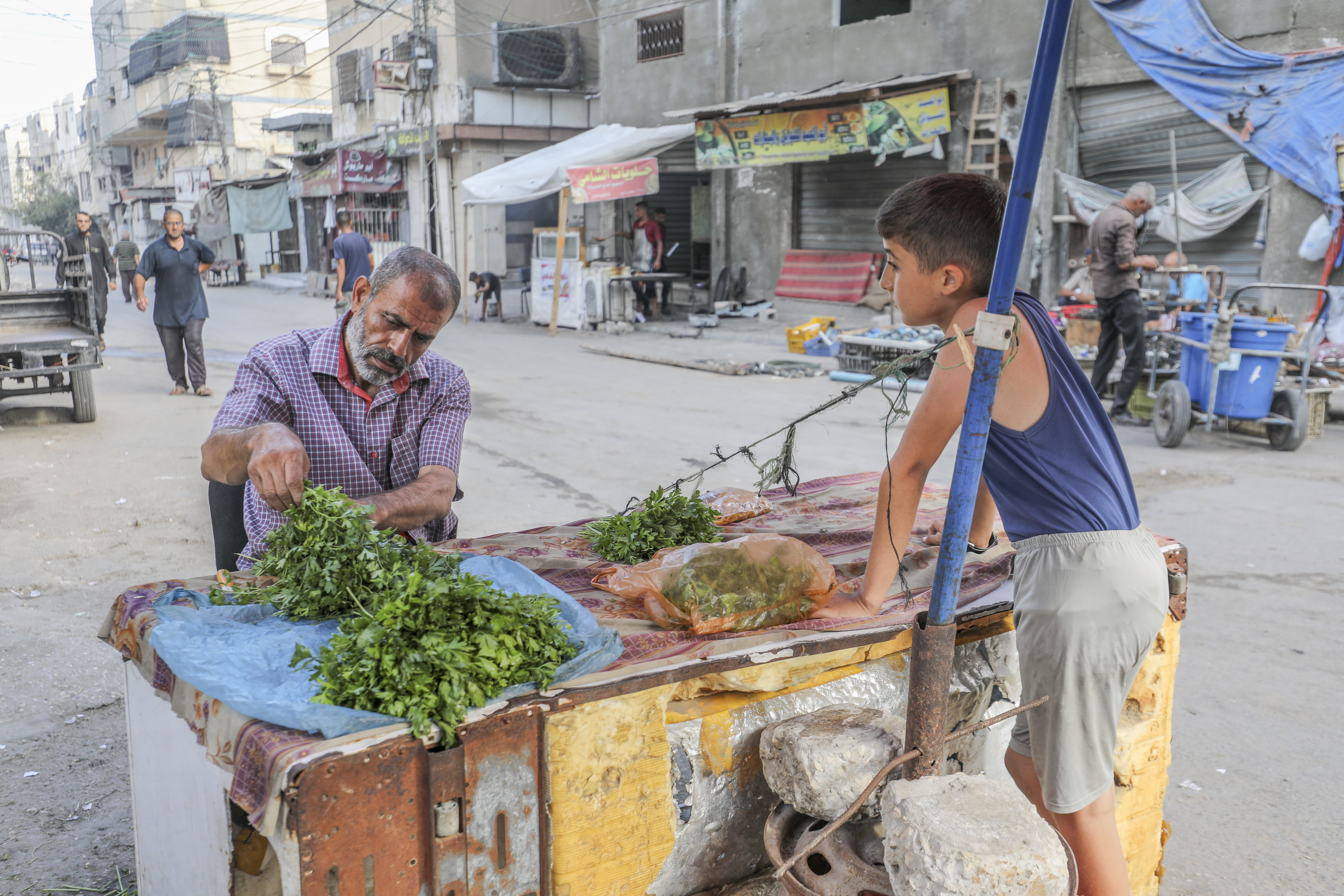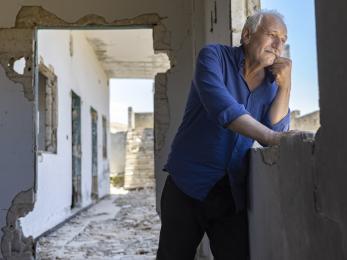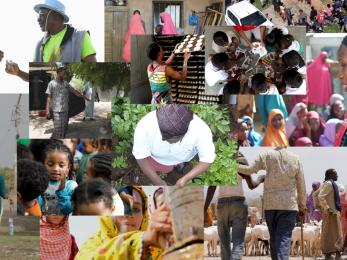Chapter 1: What is Ebola and what does it do to the body?
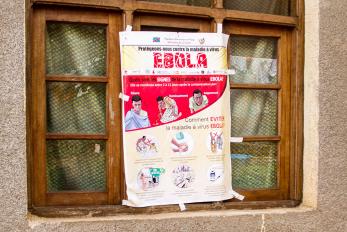
Ebola still exists in Africa, years after the last heavily publicized epidemic impacted the world from 2014 to 2016. Scientists cannot pinpoint exactly where an Ebola outbreak begins, but they know that Ebola is transmitted through contact with infected bodily fluids. Ebola can spread quickly if community members and healthcare workers do not take preventive measures.
However, Ebola is still considered a rare disease, and there are many ways to protect yourself against the virus in the event of an outbreak or as a traveler to a country affected by Ebola.
In this section, we will provide an overview of the Ebola virus, how it affects the body and how the virus is transmitted. We’ll also explore ways to protect oneself against the virus. It is possible to control Ebola — first by understanding how the virus works.
What exactly is Ebola?
The Ebola Virus Disease (EVD) is a rare and lethal disease caused by a virus, and mostly affects people and nonhuman primates. It is also known as hemorrhagic fever because the virus causes issues with how blood clots and might lead to internal bleeding. Ebola also causes tissue damage and inflammation. The average fatality rate is around 50 percent.
In humans, EVD is caused by the Ebola virus, Sudan virus, Tai Forest virus or Bundibugyo virus. Scientists do not know where the Ebola virus comes from, however, they believe it is animal-borne. Infected fruit bats are thought to be the most likely source of Ebola.
What happens to your body when you get Ebola?
Ebola symptoms do not necessarily appear immediately after exposure. It may take anywhere from two to 21 days after exposure to the virus for symptoms to appear. On average, most people start to experience symptoms eight to 10 days after coming into contact with the virus.
Some individuals might suspect they have the flu or malaria at first because these illnesses share many common symptoms with Ebola. Ebola symptoms may include the following:
- Fever
- Headache
- Weakness
- Diarrhea
- Vomiting
- Stomach pain
- Muscle pain
- Unexplained bleeding or bruising
About a week after the first symptoms appear, most people develop a rash followed by hemorrhagic fever. The term hemorrhagic fever refers to a group of illnesses caused by four families of viruses. Ebola is one of the viruses that cause hemorrhagic fever. In itself, hemorrhagic fever refers to the interference of the body’s ability to clot.
Because Ebola attacks the immune system, and leads to uncontrolled bleeding and organ damage, up to 50 percent of people who become infected with Ebola will die. Factors such as quality medical care and quick intervention greatly affect a person's chance of survival.
What causes an Ebola outbreak to start?
Scientists believe an Ebola outbreak begins when a human comes into contact with an infected animal. This might be an infected fruit bat or a non-human primate. Even though animals are thought to start Ebola outbreaks, scientists are still not sure exactly how the virus is transmitted by an animal. They suspect the disease spreads from animal to person by eating something that had contacted infected bodily fluid from an animal, or by getting blood in the eyes from butchering an infected animal for meat.
In a review published in 2015, during the largest Ebola outbreak in Africa, researchers evaluated the connection between Ebola virus transmission and food. They found that there is a far greater relationship between food and Ebola than they had expected. Meat from wildlife such as rodents, bats, shrews and nonhuman primates have been found to be infected with the Ebola virus. The Centers for Disease Control and Prevention (CDC) have noted that eating and handling infected meat has led to transmission. Furthermore, bats can transmit Ebola to other animals, which then spread the virus to humans.
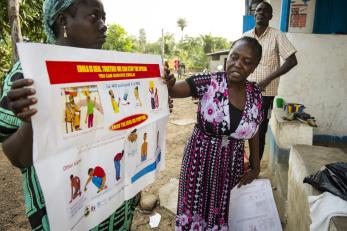
What causes Ebola to spread?
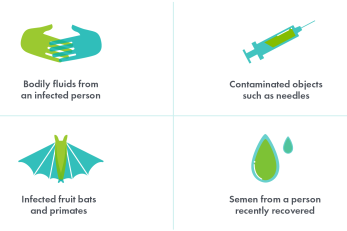
Once a person becomes infected with the Ebola virus, they can spread the virus to another person through direct contact with bodily fluids. The infected bodily fluid needs to enter a person's body to take effect and may enter through broken skin or the eyes, nose or mouth. A person might get Ebola if they come into contact with any of the following:
- Blood or bodily fluid such as urine, saliva or sweat from a person who is infected with EVD or who has died from EVD
- Objects such as needles that are contaminated with infected bodily fluid
- Infected fruit bats or nonhuman primates
- Semen from a person who recovered from EVD
How can you protect yourself against Ebola?
There are several ways to prevent getting infected during an Ebola outbreak. First, it's worth noting that although Ebola is contagious, it cannot spread to others when a person does not show symptoms. Also, there is no evidence that the virus can spread through water or air, and Ebola is not usually spread through food. Currently, there is no evidence that Ebola can be spread through insects. Ebola can only spread through direct contact with infected bodily fluids and is not as easy to catch as the flu or the common cold.
If you live in or plan to travel to a country where Ebola has been found, you can take steps to protect yourself from the disease by:
- Washing your hands often
- Avoiding contact with bodily fluids
- Avoiding contact with individuals who appear ill or who have a fever
- Avoiding objects that have come in contact with an infected individual such as bedding, clothing or medical equipment
- Not handling someone who has died from Ebola
- Avoiding contact with bats and nonhuman primates, and raw meat from these animals
- Avoiding seeking medical care at hospitals where patients are being treated for Ebola
- Paying attention to your health for 21 days after returning from a country where Ebola has been found
- Seeking medical attention immediately if you experience any Ebola symptoms
Healthcare workers are especially vulnerable to Ebola. Healthcare workers and volunteers can protect themselves by taking the following steps:
- Wear personal protective equipment such as gloves, masks and eye protection
- Practice proper infection control
- Ensure medical supplies, surfaces and equipment are sterilized
- Avoid handling bodies of those who died from Ebola
- Let health officials know if you come into contact with the bodily fluid of an infected patient
Mercy Corps prioritizes the value of hygiene through its work in Ebola-affected areas. During past outbreaks and the current one, we provide handwashing stations, access to clean water, and hygiene education to curb the spread of the disease.
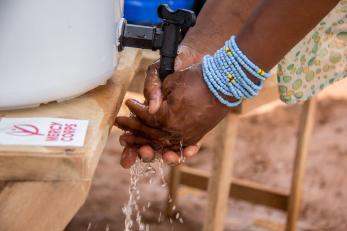
Is there a vaccine to prevent Ebola?
According to the CDC, there currently is no approved vaccine for Ebola. However, the World Health Organization (WHO) mentions the use of a vaccine named rVSV-ZEBOV during an Ebola outbreak. This vaccine has shown to be safe and effective in countries fighting the Zaire strain of Ebola. The vaccine is recommended for use during outbreaks if a licensed vaccine is not available. The vaccine has been engineered to contain a protein from the Zaire strain and to elicit an immune response to the virus. The vaccine was used during the Ebola epidemic in 2015 and was given to more than 16,000 volunteers.
Even though the vaccine was shown to be safe and prevents infection, more research is needed before it can become licensed. It is only used to protect individuals who are at high risk of contracting the disease, such as close family members of Ebola patients or frontline healthcare workers. Individuals who receive this vaccine still need to take proper protective measures against Ebola. Scientists still do not know for sure how long the vaccine lasts, but studies suggest that patients experience protection for up to a year.
What are the long-term health effects of Ebola?
Ebola leaves a lasting impact on survivors and can stay in certain bodily fluids after a person has recovered. Scientists are studying how long Ebola stays in the body of Ebola survivors. It is known that Ebola survivors have antibodies for up to 10 years after recovery which means they may be able to provide care to sick individuals in the event of an outbreak. However, they should still take precautions, and the antibodies only provide protection against the same strain that the caused the infection.
Many survivors face long-lasting health effects after battling Ebola. The time it takes to completely overcome the virus varies between individuals. Ebola survivors may experience health complications after recovery such as:
- Fatigue
- Headaches
- Muscle, joint or stomach pain
- Vision problems or eye pain
- Inflammation
- Depression
- Post-traumatic stress disorder (PTSD)
Also, Ebola survivors may face stigma when they re-enter their communities. For example, some survivors report feeling rejected by friends, family and other members of the community after Ebola. Many face discrimination and grief, especially if they lost loved ones during an outbreak.
A survey published in BMJ Global Health found that PTSD and depression were common among survivors and family members a year after coping with the effects of Ebola, and they may need psychosocial support in addition to treatment for physical symptoms. Survivors should keep in mind that they are critical to preventing future outbreaks and spreading hope throughout communities. They show communities across the globe that Ebola can be beaten, and they can use their experiences to educate others about the virus.
Can Ebola be treated?
Currently, there is no approved treatment for Ebola, and a cure has not yet been discovered. Researchers are working on developing drugs that would stop the virus from copying itself.
In the meantime, Ebola symptoms are treated as they appear. Treatment usually includes providing fluids intravenously, oxygen therapy, medication to reduce vomiting and diarrhea, and treating other infections if present. The goal of treatment is to support a person's own immune system until it can eradicate the virus and replace fluid loss. Recovery depends on a person's immune system and the quality of care and support they receive. Also, the earlier someone seeks treatment for Ebola, the better the outcome.
Can you survive Ebola without treatment?
Surviving Ebola depends largely on a person's immune system, maintaining blood pressure and replacing lost fluids. While experiencing Ebola symptoms, a person loses fluids rapidly. They need about 12 ounces of intravenous fluids every hour to support organ functioning. Therefore, it's not safe to say that one could survive Ebola without treatment.
How much does it cost to treat Ebola?
According to an article published in Pathogens and Global Health, researchers estimate that the total societal costs of an Ebola case with full recovery range from $480 to $912. Cases where the patient does not survive range from an estimated $5,929 to $18,929 depending on the patient's age and country. Costs include care, additional personal protective equipment for healthcare workers, wages and productivity loss resulting from absenteeism or death. The study looked at costs in Guinea, Liberia and Sierra Leone — the three countries most affected by the 2014 Ebola epidemic — with the goal to gain understanding and reduce the economic impact of an Ebola outbreak.
In the United States, Ebola treatment is far more costly. It's estimated to have cost around $30,000 a day to treat one Ebola patient during the epidemic. This amount also includes money lost as a result of taking beds out of a ward where an Ebola patient was treated. How many Ebola survivors are there?
According to a WHO 2016 publication, there are over 10,000 Ebola survivors. Early intervention is key to surviving Ebola. That's why Mercy Corps values early response and hygiene education.
